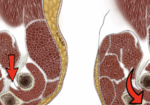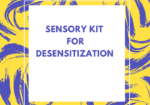Qu'est-ce que le syndrome des loges à l'effort chronique ? Présentation et suggestions de thérapies manuelles
Classé sous Évaluation
Compartiment Le syndrome d'effort est une affection caractérisée par une augmentation de la pression dans un compartiment du corps, entraînant douleur, gonflement et réduction de la perfusion tissulaire (Barkay et al., 2021 ; Buerba et al., 2019). Il peut être aigu ou chronique (Barkay et al., 2021). L'effort chronique compartiment Le syndrome CECS est un type rare, le plus souvent observé chez les athlètes, en particulier les rameurs et les motocyclistes, lorsque le membre supérieur est atteint, bien qu'il puisse survenir chez n'importe qui (Buerba et al., 2019 ; Cole et al., 2017). Le CECS se caractérise par une accumulation progressive et réversible de pression dans le compartiment, entraînant une douleur et un œdème progressifs, généralement déclenchés par l'activité. Cela se produit en raison d'une hypertrophie musculaire, de microtraumatismes et d'un fascia non compliant (Buerba et al., 2019 ; Ogrodnik et al., 2021). Les patients signalent souvent une douleur persistante qui s'aggrave avec les mouvements répétitifs (Cole et al., 2017).
Options de traitement pour le CECS
Le CECS est souvent géré de manière conservatrice, bien que des options chirurgicales soient disponibles si les symptômes persistent et interfèrent avec les activités quotidiennes.
Traitements conservateurs
La gestion conservatrice comprend généralement des massages, des étirements et une modification de l’activité (Buerba et al., 2019).
Thérapie manuelle :
Concernant les techniques de massage et d'étirement, un programme de cinq semaines de massage et d'étirements à domicile s'est avéré efficace pour réduire la douleur post-exercice (Blackman et al., 1998). Une étude a conclu que cela était dû à une augmentation du volume compartimental après le massage due à l'étirement des fascias, ou à une augmentation du seuil de douleur due à des altérations des récepteurs neuronaux dans les fascias ou à des modifications musculaires (Blackman et al., 1998).
Biofeedback :
Une façon de traiter ce syndrome est de proposer une éducation à la modification des activités. De plus, la maladie chronique compartiment Le syndrome est souvent appelé syndrome compartimental d'effort chronique car il est généralement induit par l'exercice (Buerba et al., 2019). Ceci est obtenu grâce à la fourniture d'un biofeedback lors des interventions de modification et de réentraînement de l'activité (M. Materi, communication personnelle, 14 septembre 2023 ; Zimmerman et al., 2017). Le biofeedback fournit un retour visuel concernant la force exercée par un compartiment musculaire (Larsen et al., 2014 ; M. Materi, communication personnelle, 14 septembre 2023).
Figure 1 : Dispositif de biofeedback mTrigger Figure 2 : Dispositif de biofeedback mTrigger
https://www.mtrigger.com/biofeedback-occupational-hand-therapy/

Poignées :
Français De plus, des poignées plus grandes aideraient à modifier l'activité (M. Materi, communication personnelle, 14 septembre 2023). Étant donné que le syndrome des loges d'effort chronique est généralement observé chez les rameurs et les motocyclistes, qui sont des professions qui exigent une force de préhension élevée et une utilisation continue, la création de poignées plus grandes pourrait moduler la force de préhension requise pour manipuler un objet (Buerba et al., 2019 ; M. Materi, communication personnelle, 14 septembre 2023 ; Sheerin et al., 2023). Changer les poignées de préhension modifiera la quantité de force et le positionnement qu'un patient exerce dans une activité, ce qui modifiera le mouvement répétitif qu'il utilisait (M. Materi, communication personnelle, 14 septembre 2023 ; Zimmerman et al., 2017 ; Schubert, 2011).
Figure 2 : Poignée intégrée

Dans l’ensemble, le syndrome des loges d’effort chronique peut être traité de manière conservatrice, mais les individus ont la possibilité de subir une fasciotomie si les symptômes persistent et interfèrent avec leur vie quotidienne.
Les références
Barkay, G., Zabatani, A., Menachem, S., Yaffe, B., et Arami, A. (2021). Syndrome des loges aigu du membre supérieur : résultats cliniques après traitement chirurgical. Étude de cohorte rétrospective. Journal de l'Association médicale israélienne, 23(8), 516–520.
Blackman, PG, Simmons, LR et Crossley, KM (1998). Traitement du syndrome du compartiment antérieur chronique d'effort par massage : étude pilote. Journal clinique de médecine du sport, 8(1), 14–17. https://doi.org/
Buerba, RA, Fretes, NF, Devana, SK, & Beck, JJ (2019). Syndrome des loges d'effort chronique : stratégies de prise en charge actuelles. Journal en libre accès de médecine du sport, 2019(10), 71–79.
Cole, A., Hiatt, JL, Arnold, C., Sites, T., & Ylanon, R. (2017). Syndrome logal chronique d'effort dans l'avant-bras d'un lanceur de softball universitaire. Médecine du sport – Ouvert, 3(1), 11.
Larsen, CM, Juul-Kristensen, B., Olsen, HB, Holtermann, A., & Søgaard, K. (2014). Activation sélective des compartiments intramusculaires du muscle trapèze chez les sujets atteints d'un syndrome de conflit sous-acromial. Étude cas-témoins.Journal d'électromyographie et de kinésiologie,24(1), 58–64.
Ogrodnik, J., Oliver, JD, Cani, D., Boczar, D., Huayllani, MT, Restrepo, DJ, Sisti, A., Manrique, OJ, Broer, PN, & Forte, AJ (2021). Cas clinique de syndrome des loges aigu non traumatique de la main et revue systématique pour le membre supérieur. Main, 16(3), 285–291.
Schubert, AG (2011). Syndrome des loges à l'effort : revue de la littérature et propositions de lignes directrices pour la rééducation après une libération chirurgicale. Journal international de physiothérapie du sport, 6(2), 126–141.
Sheerin, M., O'Riordan, C., Conneely, M., Carey, L., Ryan, D., Galvin, R., & Morrissey, AM (2023). Efficacité des interventions ergothérapeutiques sur la fonction et la performance occupationnelle chez les adultes souffrant d'affections de la main, du poignet et de l'avant-bras : revue systématique et méta-analyse. Journal australien d'ergothérapie, 1-15.
Zimmermann, WO, Linschoten, CW, et Beutler, A. (2017). Rééducation de la marche dans le cadre du programme de traitement des soldats souffrant de douleurs aux jambes liées à l'exercice : expériences cliniques préliminaires et maintien. Journal sud-africain de médecine du sport, 29(1), 1-6.
Plus à lire
Nouveau test de provocation de la tendinopathie distale du biceps pour le thérapeute de la main
Caekebeke, P., Schenkels, E., Bell, SN et van Riet, R. (2021). Test de provocation du biceps distal. Le Journal de Chirurgie de la Main. The Skinny : Ces chirurgiens recherchaient un test de provocation pour la tendinopathie distale du biceps (test de tendinite distale du biceps), en particulier les déchirures partielles, qui soit plus sensible et spécifique. Les larmes complètes sont plus facilement testées dans…
En savoir plusConnaissez-vous l’ingrédient secret pour se remettre d’une blessure ?
Connaissez-vous l’ingrédient secret pour se remettre d’une blessure ? Je vais vous donner un indice : il contient 5 lettres et commence par la lettre S. SOMMEIL Vous êtes-vous déjà posé une question : le sommeil aide-t-il à guérir les blessures ? C'est à vous de partager avec vos patients mais aussi de servir de…
En savoir plusKit Sensoriel pour Hypersensibilité
Écrit par Melissa Miller Introduction Après une blessure ou une intervention chirurgicale, les nerfs de la peau et autour de la zone blessée peuvent devenir trop sensibles. Cela peut provoquer une douleur ou une sensation désagréable due à des stimuli qui ne causeraient généralement pas d'inconfort. Par exemple, une légère touche d’une chemise ou d’un certain tissu peut ressembler à des aiguilles pour…
En savoir plusImagerie motrice graduée en thérapie de la main
Les 3 étapes de l'imagerie motrice graduée Nous avons tous entendu parler de la thérapie par boîte à miroir, mais connaissez-vous les détails de son fonctionnement ? Il y a en fait 3 étapes qui sollicitent le cerveau et tirent parti de sa plasticité. Il existe de nombreuses preuves à l’appui de ces trois étapes et vous pouvez les utiliser…
En savoir plusInscrivez-vous pour recevoir des mises à jour directement dans votre boîte de réception !
Inscrivez-vous avec nous et nous vous enverrons régulièrement des articles de blog sur tout ce qui concerne la thérapie des mains, des notifications chaque fois que nous mettons en ligne de nouvelles vidéos et tutoriels, ainsi que des documents, des protocoles et d'autres informations utiles.






